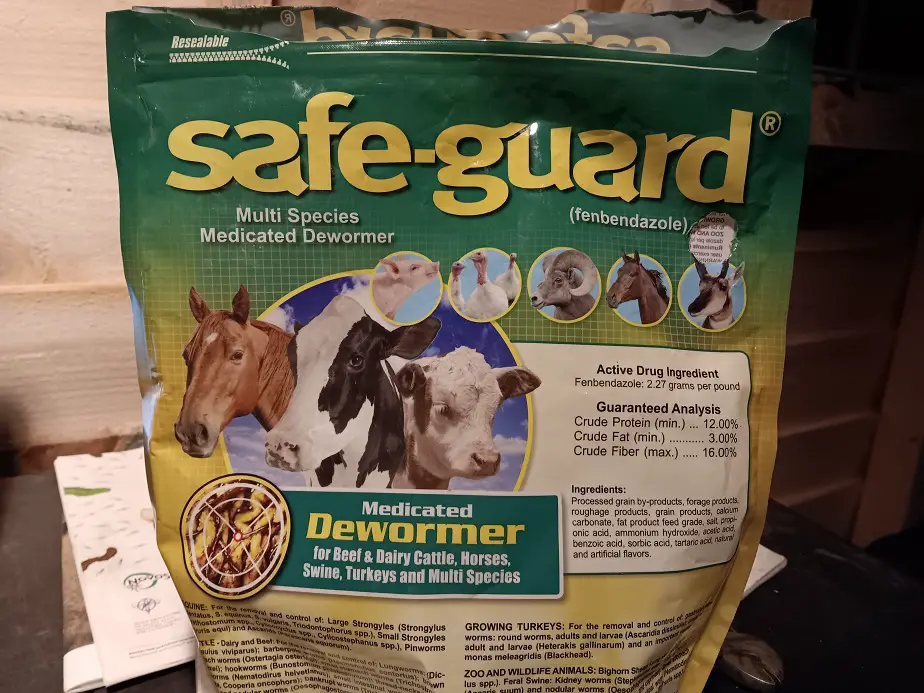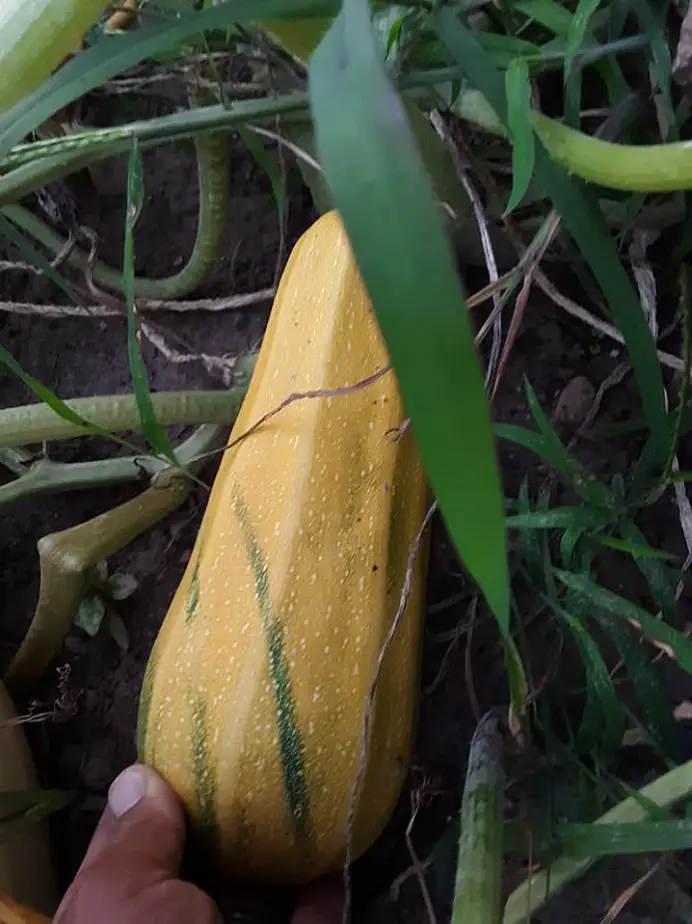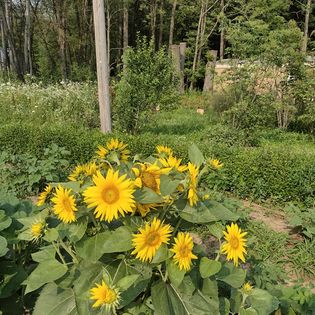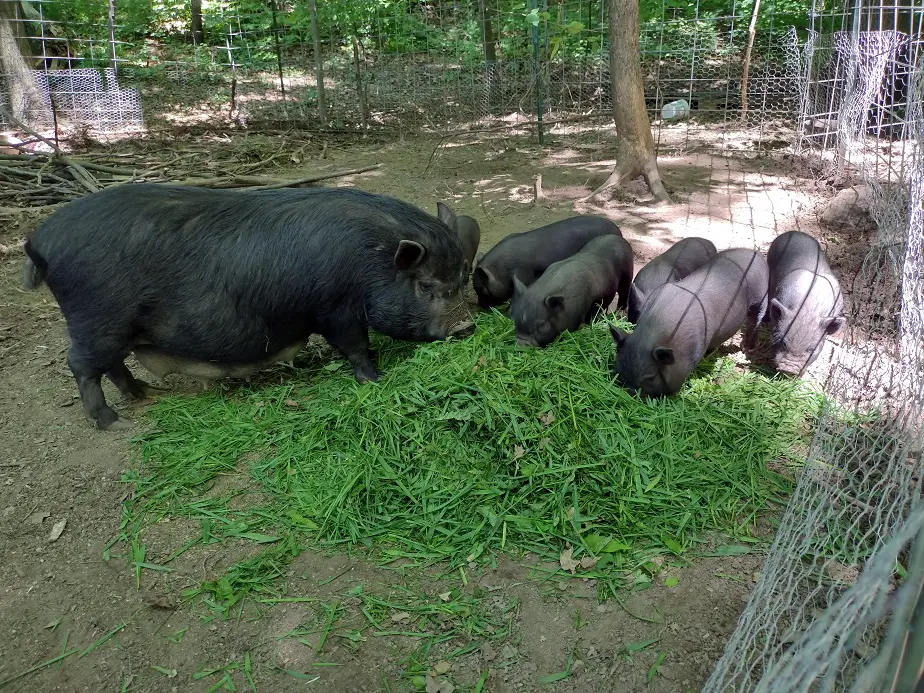We have raised pigs for almost 5 years now and have learned quite a lot. I especially put a lot of study into the different diets of pigs.
Grass is very good for pigs. It improves digestion, reduces gut-borne E. coli, and is a great source of vitamins. Fresh grass and other fodder are an important part of a healthy pig’s diet that should not be neglected. Fresh grass or dried hay can be offered as a healthy snack to pigs and they really enjoy it.
Whether you have a pet or are raising a hog to butcher, this is an important topic that most people miss. I’ll dive into it more.
Why Pigs Should Eat Fresh Grass
Grass, particularly the fresh stuff, is an amazing health booster for pigs. It’s like giving them a salad. Pigs have very similar nutritional needs as people. Feeding just a dry pelleted feed to a pig isn’t the best, it’s just the simplest. Imagine if you told your doctor you only eat dry, processed foods.
He’d probably tell you to eat a few salads and some fresh vegetables. Fresh greens benefit the entire body with hundreds of different helpful compounds. Consider chlorophyll, which lowers the risk of cancer, improves the immune system, and helps digestion and skin issues.
It’s a general health booster. Chlorophyll is great for pigs. Then there are the vitamins. pig feed has vitamins added, but the vitamins in fresh greens and vegetables are absorbed by pigs at a much higher rate. Pigs kept in a pen usually crave grass to help balance their diet.
Pigs get more out of leafy greens than stemmy grasses, but they’re all good. There are no grasses that a pig shouldn’t eat. You can pick grass by hand, cut it with a knife, or give them lawn clipping provided they are fresh. It also helps of the mower blade is sharp so it cuts instead of pulverizing it. You can literally give pigs all the grass they want as long as they have other feeds as the main course.

One thing you need for pigs, no matter your raising system, is a parasitic worm treatment. The best swine dewormer is Fenbendazole. It’s known by the brand name Safeguard. Safeguard is available as a medicated corn/alfalfa pellet. It’s the only way I can worm my pigs since they won’t stand still for an injection of Ivermectin. It’s easy and cheap.
- There is a stronger pellet for swine only. Here it is on Amazon
- There is a weaker pellet for general barnyard livestock, including swine. Here it is on Amazon.
I use the multi-species version because it’s what’s available in my local store and I can use it for my chickens too. It’s the most effective swine wormer and the easiest to administer. I use it on all weaned piglets and adults twice a year. Don’t go without it.
There is no “Grass Fed Pork”
Grass is not a complete diet for pigs. They need additional proteins, starches, and fats. There isn’t any such thing as true “grass-fed pork”, at least not the way you’d think of it. Some farmers use the term “grass-fed pork” which just means the pigs get to nibble at pasture crops like grass or alfalfa.
It doesn’t mean they live on grasses alone, pigs can’t do that. There are ten proteins that pigs need and pasture forage only has about five of those. And it certainly doesn’t have much starch or fat. One of the great things grass has in it is water. It’s usually between 70 and 85 percent water.
I have a boar who refuses to drink his water. He’s just that stubborn. He had skin issues because of it. A big pile of grass, being about 85 percent water this time of year, gives him a nice drink. I used fresh grasses, for the water content, to help fix his dry skin problem.
I give my pigs a lot of fresh fodder. Some things they love and some things they really turn up their noses at. Let’s talk about the other options for fresh, wild fodder.
Wild Plants that Pigs Love
The 5 wild plants pigs love best in my area are woodbine, clover, wild violet, grasses, and chicory root. I have also noticed that pigs absolutely love the leaves of the wild cherry tree. I don’t know what it is about them, but every pig I’ve raised, about 20, will go crazy for them.
Wild cherry can give them a belly ache if you overdo it, but a little is healthful. They consider it a yummy treat. Recently, my pigs got out of their pen. The Momma went and laid down in the grass and 7 piglets were running through the woods.
I noticed they were grazing and snacking on leaves from the wild cherry and maple seedlings. Some were munching on Lilly of the Valley, which made me concerned because I hear how toxic it is, but the piglets were fine and never showed an issue. You can also plant and grow fodder specifically for pigs.

Growing Fodder for Pigs
Annual crops such as sugar beets, corn, and pumpkins are great options for fresh feeding fodder for pigs. These crops provide a high amount of valuable nutrients when fed freshly picked, and can be stored during the cold months as a winter feed supplement.
I grow a giant variety of Indian corn, a mix of pumpkins and squashes, and fodder beets as a fall and winter feed supplement. The most practical one is probably the fodder beets, also called mangel beets or just mangels. We’ve grown them now for a few years.
I like them because when planted early, they are good to pick by the end of July, but I can leave them in the ground until the day before a hard freeze. That way the pigs can have fresh, starch filed veggies through half the summer and all of fall. Then any left can be stored in crates in our pantry.
Sugar beets are much the same. They both have good starch for energy. Sugar beets are more energy dense, but grow a bit smaller. The fodder beets grow larger and have more feed value per square foot of garden space, but each one has more fiber and less energy.

Sometimes pigs have to be coerced into eating the beets. They’re not as scrumptious as the others. All pigs absolutely love squash and corn. Sweeter squash/pumpkins, usually marked by deeper orange flesh, are the most energy-rich.
Hubbard squash is my favorite storage squash for pigs because they store so well. With the larger squashes/pumpkins, I cut them and feed them only half in a day.
Corn is best fed to pigs anytime after the ears have fully plumped (the silks have turned brown). You can feed it fresh and unshucked and they’ll devour the whole thing. If you feed it dried, It’s often recommended to shell it first so a pig doesn’t end up choking on a big hunk of hard, dried corncob.
What Pigs Eat in the Wild
Pigs in the wild manage off of mast crops like buckeyes, acorns, persimmons, and crab apples. They also go after snakes and rodents and have been known to even eat baby deer. Wild pigs root up the soil to find worms, grubs, and starchy tubers as well. They also have a tendency to go after farm crops.
Related Articles:

